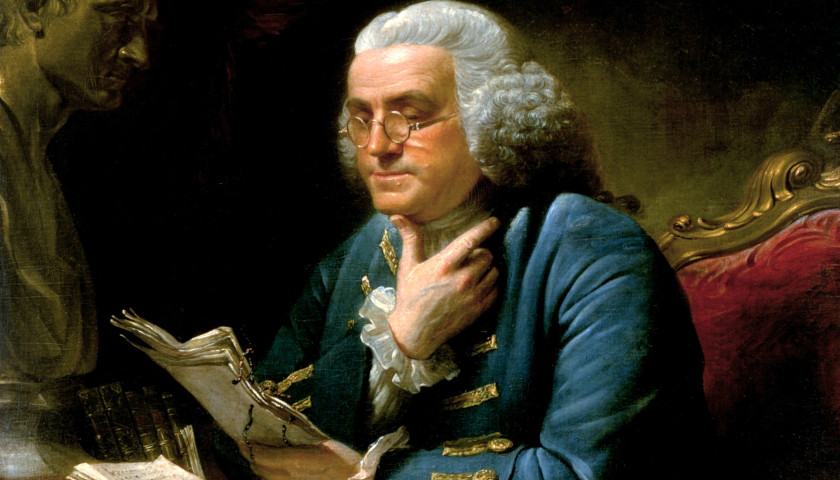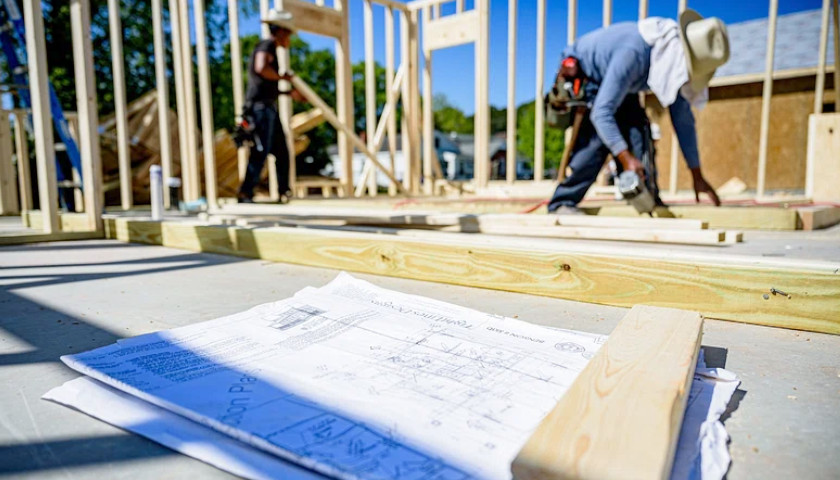Before anything else, Benjamin Franklin was a printer. It’s difficult to imagine now, but printing was a strenuous trade in Franklin’s time, requiring late hours, heavy lifting of various lead types, and long shifts operating the manual presses. Franklin, however, loved to read, which suited him well in his career as a printer.
Historian H.W. Brands writes in his biography of Franklin, The First American, that the young Franklin’s language abilities “eased the chores of editing and proofing.” At an early age, Franklin acquired an “always-widening reading” habit that “attuned his ear to felicitous phrasing and his eye to orthodox orthography.”
At just 12-years-old, Franklin began working as an apprentice to his brother, James, who was a printer in Boston. Franklin signed up for an apprenticeship with a nine-year term, much longer than most apprenticeships of the time because printing “required greater skill and longer training than most trades,” Brands notes.
Franklin left his apprenticeship under his brother in 1723 at the age of 17, just five years into his nine-year term under circumstances clouded by history, and found work as a printer in Philadelphia. By 1724, at the age of 18, he was on his way to London to purchase his own printing equipment and network with other tradesmen. According to the Benjamin Franklin Historical Society, he was advised to make the trip by Governor William Keith, who promised to write the necessary letters of recommendation and a letter of credit that would allow Franklin to purchase equipment and supplies.
But those letters never showed up, and Franklin was stranded in London to fend for himself. Luckily, he was a highly-skilled printer by that time and quickly found employment at Palmer’s printing shop. He stayed in London for 18 months and worked in various journeyman printer roles before making the two-month journey back across the Atlantic.
What he didn’t know at the time was that he was returning to an America that was in high demand for his printing skills. According to Brands, London alone supported far more printers than all the American colonies combined.
He arrived in Philadelphia in 1726 and took up employment again with Samuel Keimer, whom he found to be an ineffective printer. So when the opportunity arose, Franklin purchased The Pennsylvania Gazette in October 1729 from the indebted Keimer. The Gazette was the second newspaper published in Philadelphia, and became the most successful newspaper in all the colonies. He was still just 23-years-old when he purchased The Gazette.
Franklin greatly increased The Gazette’s subscriber base by shortening its name, improving its appearance through better printing types, and publishing relevant news. Keimer, on the other hand, had been using a “broken-down press and a single worn-out font” that he was “clearly unfamiliar” with operating, Brands writes.
But Franklin’s greatest business accomplishment was still to come. On December 19, 1732 Franklin published the first edition of Poor Richard’s Almanack for the year of 1733 writing under a pseudonym of Richard Saunders. He’d publish the almanac annually for the next 25 years.
The Benjamin Franklin Historical Society suggests that Franklin viewed the almanac as a “vehicle of instruction for common people who could not afford books.” The annual publication contained a variety of information, from calendars and weather forecasts, to poems and jokes. Almanacs were bestsellers in the American colonies, and Franklin’s was among the most popular. In fact, Napoleon at one point ordered it to be translated into Italian. Franklin printed up to 10,000 copies of of the almanac each year and its success began to create wealth for Franklin.
From there, Franklin used his newfound wealth to expand his operations beyond Philadelphia and did so by founding the first commercial franchise system in America. The printing business formed the foundation for his own business empire.
His idea was to place his workers in printing houses in other colonies, rent work space for them, and provide printing equipment. In exchange, Franklin received a third of the profits while the partners had the option of purchasing the operation to run themselves at the end of their six-year term.
The historical society dedicated to his life has this observation on Franklin’s franchise system: “Franklin’s network of printers grew to be the largest and most powerful in colonial America stretching from New England to the West Indies. Franklin had a key role in training printers who would play an important part in the fight for independence.”
All the while Franklin was slowly securing the printing rights for some of the colonies. In 1730, he became the official printer of Pennsylvania, his most profitable printing business that entailed the printing of paper currency and government forms. By 1740, he had become the official printer of New Jersey as well.
It wasn’t until 1748 that Franklin, having built a fortune off of printing, decided to retire from the trade and focus all of his energy on research and public service. In other words, it wasn’t until age 42 that Franklin began the political life that most Americans would come to remember him by. Unlike many of his fellow Founding Fathers, his background was primarily as a tradesman.
Franklin is most often remembered as the only Founding Father to sign all three founding documents, but it’s doubtful much of his political accomplishments would have been possible were it not for the reputation and success he first built as a printer.
The story of Benjamin Franklin all began with the development of a skill that the colonial market valued. Franklin never forgot his roots, either, habitually signing letters until the end of his life as, “B.F. of Philadelphia, Printer.”
– – –
Anthony Gockowski is managing editor of Battleground State News, The Ohio Star, and The Minnesota Sun. Follow Anthony on Twitter. Email tips to [email protected].





